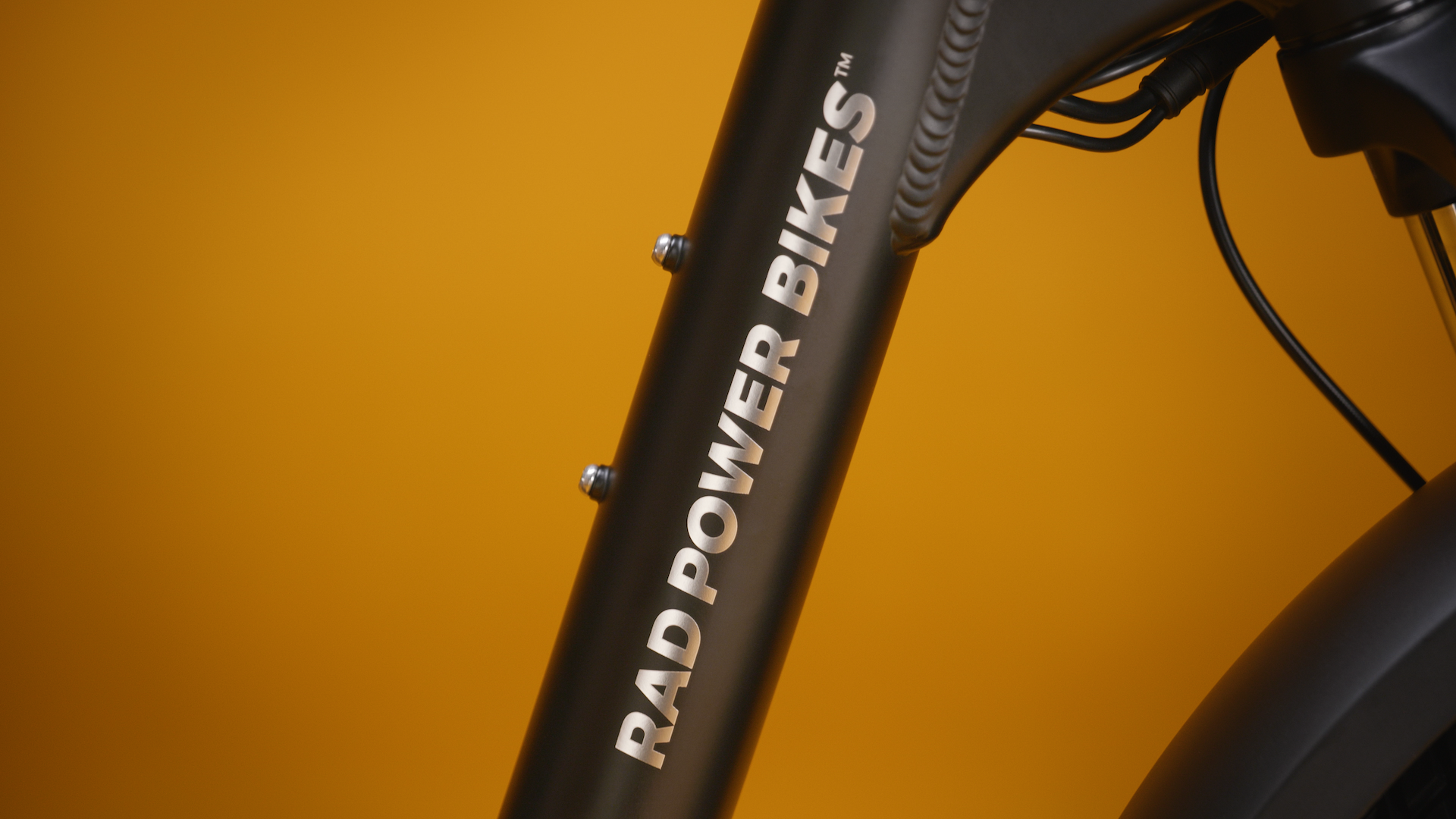
Rad Power Bikes, a once-dominant force in the burgeoning electric bicycle market, has delivered a sobering message to its workforce: the company faces a potential shutdown as early as January if it fails to secure a critical influx of new funding or an acquisition. The internal communication, disseminated by the company’s "people team" and reviewed by multiple media outlets, underscores the profound challenges currently gripping the micromobility sector and, specifically, a brand that once epitomized accessible e-bike innovation.
From Garage Startup to Industry Leader: The Rad Power Bikes Journey
The story of Rad Power Bikes began in 2007 with founder Mike Radenbaugh, who started customizing electric bicycles in his parents’ garage in Northern California. The official launch of Rad Power Bikes as a direct-to-consumer brand occurred in 2015, driven by a vision to make electric bikes affordable and accessible to a wider audience. The company quickly distinguished itself by offering feature-rich e-bikes at competitive prices, bypassing traditional retail markups. Its early models, like the RadRover fat-tire e-bike and the RadCity commuter, resonated with consumers seeking practical, fun, and environmentally friendly transportation alternatives.
By the mid-2010s, Rad Power Bikes had carved out a significant niche, building a loyal customer base and a reputation for rugged, reliable machines. The company’s success was not just in selling bikes but in fostering a community of "Rad Riders" through its direct engagement model and customer service. This foundation positioned Rad Power Bikes perfectly for the unprecedented surge in demand that was about to hit the micromobility industry.
The Pandemic Boom and Subsequent Bust
The onset of the COVID-19 pandemic in early 2020 proved to be an unexpected catalyst for the entire micromobility sector, and particularly for e-bikes. With public transportation perceived as risky, gyms closed, and a widespread desire for outdoor activities, electric bikes emerged as an ideal solution. Consumers, often with stimulus checks in hand, flocked to e-bike brands for both recreation and essential commuting, including for the burgeoning gig economy delivery services.
Rad Power Bikes capitalized on this surge, experiencing exponential growth. The company secured substantial funding rounds, including $150 million in 2020 and a staggering $304 million in 2021, valuing the Seattle-based firm at over $1 billion. This period saw rapid expansion, increased production, and ambitious plans for future growth. The company’s direct-to-consumer model allowed it to quickly scale and meet demand, seemingly unstoppable in its trajectory.
However, the pandemic boom eventually gave way to a stark reality check. As global economies reopened, consumer spending patterns shifted dramatically. The internal email from Rad Power Bikes directly attributes its current predicament to a "sudden drop in consumer demand" that left the company "saddled with excess inventory." This whiplash effect, from insatiable demand to a glut of unsold products, created immense financial strain. Companies that had ramped up production to meet projected continued growth found themselves with warehouses full of inventory, tying up critical capital and necessitating heavy discounting, which eroded profit margins.
Navigating a Treacherous Economic Landscape
Rad Power Bikes’ current struggles are compounded by a confluence of broader economic and geopolitical factors. The internal communication highlighted "tariffs and the macroeconomic landscape" as significant challenges. Tariffs on goods imported from China, where a large percentage of e-bike components and even complete units are manufactured, have consistently driven up costs for U.S.-based companies. These tariffs, initially imposed during the previous administration and largely continued, have squeezed margins and forced companies to either absorb costs or pass them on to consumers, making products less competitive.
Beyond tariffs, the global macroeconomic environment has turned significantly less favorable. High inflation rates, rising interest rates, and a general cost-of-living crisis have led consumers to tighten their belts, especially when it comes to discretionary purchases like new e-bikes. Investor sentiment has also shifted dramatically from prioritizing "growth at all costs" to demanding clear paths to profitability and sustainable business models. This makes securing new funding or acquisition deals significantly more challenging, as investors are more risk-averse and scrutinize balance sheets with greater intensity.
Supply chain disruptions, initially a challenge during the pandemic, have also continued to evolve. While component shortages have eased in some areas, the costs of shipping and logistics have remained elevated compared to pre-pandemic levels, further adding to operational expenses. These persistent pressures have forced Rad Power Bikes, like many others, to undertake multiple rounds of layoffs over the past few years, a stark indicator of its efforts to right-size operations and control escalating costs.
Leadership Shifts and the Quest for a Lifeline
In an effort to steer the company through these turbulent waters, Rad Power Bikes underwent a significant leadership change earlier this year. Kathi Lentzsch, an executive renowned for her expertise in turning around underperforming companies, was appointed as CEO. Her arrival signaled a clear intent to restructure and find a viable path forward. Lentzsch and her executive team have reportedly spent the past several months actively exploring "strategic partnerships with other companies that could acquire [Rad Power] or provide funding."
The recent internal email revealed that a "very promising" option to keep the company afloat had "appeared to be likely to close," but ultimately "did not come to fruition." This failed deal underscores the immense difficulty of securing capital in the current investment climate, even for a brand with Rad Power’s market recognition and established user base. The company’s leadership remains hopeful, stating they are "still fighting to find ways to continue," and that a "cessation of Rad’s operations is not a foregone conclusion." However, the transparency of the communication to employees suggests the gravity of the situation and the dwindling options.
The Human Element: Employee Impact and WARN Notice
The potential shutdown carries significant implications for Rad Power Bikes’ employees. The company’s "people team" expressed a commitment to "ensure that all employees are taken care of and provided for to the fullest extent feasible." This sentiment, while reassuring, is tempered by the grim reality that a forced closure would result in widespread job losses.
Adding a tangible dimension to this threat, Rad Power Bikes recently issued a Worker Adjustment and Retraining Notification (WARN) notice to employees at its Seattle headquarters. This federal mandate requires employers to provide advance notice of mass layoffs or plant closures. The notice informed 64 employees at the Seattle office that they could be laid off as soon as January 9. The company clarified that this is not a targeted layoff specific to the Seattle office, but rather a compliance measure because that location is the only one with enough employees to trigger the WARN Act’s requirements. Should a shutdown occur, the company anticipates that "any cessation of operations will affect all locations and departments, will be permanent in nature, and that all employees will be terminated effective January 9, 2026," or within 14 days thereafter.
A Broader Trend: Micromobility’s Reckoning
Rad Power Bikes is not an isolated case; its predicament reflects a wider pattern of distress within the micromobility sector. Several high-profile companies in the e-bike and scooter space have either gone out of business or undergone significant restructuring in recent years.
- VanMoof: The Dutch e-bike maker, known for its sleek design and integrated technology, filed for bankruptcy in mid-2023 after struggling with high repair costs, manufacturing issues, and an unsustainable growth model. It was later acquired, but its original vision crumbled.
- Bird and Superpedestrian: These electric scooter sharing companies, once darlings of venture capital, have faced immense profitability challenges. Bird filed for Chapter 11 bankruptcy in late 2023, while Superpedestrian, operating the Link scooters, shut down its U.S. operations around the same time, seeking to sell its European business. The sharing model, with its high maintenance costs, theft rates, and regulatory hurdles, has proven exceptionally difficult to make profitable.
- Cake: The Swedish electric motorcycle manufacturer, praised for its innovative designs, also encountered significant financial difficulties, filing for bankruptcy in early 2024. This demonstrated that even niche premium segments within electric mobility were not immune to the funding crunch.
These examples collectively illustrate a critical inflection point for the micromobility industry. The initial euphoria and venture capital influx during the pandemic created an environment where rapid expansion often overshadowed sustainable business practices. Now, a more mature and discerning market, coupled with economic headwinds, is forcing companies to re-evaluate their strategies, prioritize efficiency, and demonstrate a clear path to profitability.
The Path Forward and Industry Outlook
Despite the industry turmoil, Rad Power Bikes has consistently been recognized for producing some of the most "compelling e-bikes on the market." Its focus on utility, affordability, and a robust build quality has earned it a strong reputation among consumers. The question now is whether this inherent product strength can overcome the formidable financial pressures.
Several scenarios could unfold for Rad Power Bikes:
- Successful Acquisition: A larger automotive, powersports, or even a retail conglomerate might see value in Rad Power’s brand, customer base, and engineering, acquiring it to integrate into their own mobility offerings.
- New Funding and Restructuring: A new investment round, perhaps from a private equity firm specializing in turnarounds, could provide the necessary capital, but would likely come with stringent conditions, deeper cost-cutting, and a complete overhaul of the business model.
- Liquidation: In the worst-case scenario, if no viable solution emerges, the company would proceed with a full shutdown, selling off its assets to repay creditors.
The fate of Rad Power Bikes holds significant implications beyond its immediate employees and investors. As a pioneer in the direct-to-consumer e-bike market, its success or failure sends a powerful signal about the long-term viability and sustainability of the broader micromobility industry. The current climate demands not just innovative products, but also resilient business models, prudent financial management, and an acute awareness of fluctuating market dynamics. The coming weeks will determine if Rad Power Bikes can navigate these treacherous waters and secure a future for its brand and its mission.





